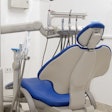
One of the most important questions in practice management is how to increase overall practice production. This question is critical because production ultimately determines the success of the practice.
There are hundreds of factors that are incorporated into practice management systems, including scheduling, case presentation, hygiene productivity, customer service, insurance management, collections, and others. But none of those happen unless production occurs.
In Levin Group's 30-year study of the top 10% of practices, we found that most practices reach the top 10% after years of steady production increases. These continual increases allow practices to reinvest in all other aspects of the practice performance ranging from purchasing new technology to securing training for the dental team.
 Dr. Roger P. Levin is the executive founder of the Dental Business Study Clubs.
Dr. Roger P. Levin is the executive founder of the Dental Business Study Clubs.Levin Group has been reviewing and ranking what we consider to be the top 50 factors in increasing practice production. As we work on this project, we've come to believe that one of the top factors in dental practice production is the size of the patient base, which correlates directly with the annual attrition of patients.
Building a patient base
Every dental practice, whether it's a startup or purchase of an existing practice, will need to build and add to its patient base. We find that most practices lose between 12% to 15% of their patients annually. This means that simply replacing 12% to 15% of patients keeps the patient base at the same size. This has certain implications, including:
- Practices are merely keeping pace with the number of lost patients per year and not increasing the size of the patient base.
- Many new patients may have lower reimbursement dental insurance plans. This means that a patient base of the exact same size will ultimately result in lower net production and profitability.
- Many practices will stabilize and plateau because there is a perception that they're "busy enough" and the hygiene and doctor schedules appear to be full. However, practices don't work to improve patient flow, efficiency, or technology that could allow the practice to comfortably see more patients.
- In a challenging time, such as an economic recession or the COVID-19 pandemic, some practices don't bring in new patients as quickly as they lose current patients. This results in falling behind and having to play catch-up, which is an undesirable cycle that many practices go through.
These are some of the reasons that practices often fail to grow their patient base. Of course, there are other factors.
Regardless of how you achieve (or fail to achieve) a large patient base, it's clear that those who are successful at it have more opportunity to increase the volume and production of patients gradually over time while maintaining a comfortable and enjoyable practice atmosphere.
Retaining patients
New patients are certainly an important factor in practice production. However, many practices put a strong emphasis on attracting new patients without paying nearly enough attention to current patients. New patients will always be needed, but it is essential for practices that want to grow and continue to increase net production to focus on retaining their current patient base.
The first step is to analyze the annual attrition rate of patients. This is the number of patients who are lost to the practice each year for the last five or more years.
The practice should also analyze the amount of production contributed by those patients. This will create a clear picture of how many patients and what level of production needs to be replaced just to break even. New patients beyond that number become additive and contribute to continual growth of the practice.
Six ways practices can retain patients
- Have 98% of all of patients scheduled at all times. Some patients aren't yet ready to return to the practice due to safety concerns, but if the practice keeps in regular communication with these patients, they will be back.
- Engage in ongoing follow-up. Implement an ongoing follow-up system for patients who are willing to schedule but don't have their next appointment. This system should have at least nine patient contacts over time to make their next appointment. Scripting, as always, will be critical.
- Evaluate the practice's value proposition for patients. Most practices are pleasant environments, but they can still improve overall customer service. The top 10% practices typically score higher than most other practices in customer service surveys. This doesn't mean they are elite; they've simply figured out how to create a positive patient experience that leads patients to remain with the practice long-term.
- Remind patients about the value of the practice and dentistry every time they come in. This should be a systemized approach that practices can use to further the value proposition and positively shape the practice brand in the mind of patients.
- Design an ongoing patient communication program. We recommend communicating with the entire patient base at least once a month with updates on dentistry, the practice, personal stories, or any relevant communication that makes patients feel more bonded to the practice.
- Consider adding a dental membership plan. The whole concept of membership is making patients feel that they belong to the practice, so they are more likely to remain with you long-term. This will also help to attract new patients if it is properly promoted.
Summary
Ranking the top production factors for a dental practice is complex, but clearly one of the most important factors is the size of the patient base. When the patient base is large enough, there are numerous options for streamlining operational systems, managing and increasing patient flow, and increasing the average production per patient -- all of which have a positive effect on the financial performance of a dental practice.
Dr. Roger P. Levin is the executive founder of the Dental Business Study Clubs. To contact him or to join the 40,000 dental professionals who receive his Practice Production Tip of the Day, visit www.levingroup.com or email [email protected].
The comments and observations expressed herein do not necessarily reflect the opinions of DrBicuspid.com, nor should they be construed as an endorsement or admonishment of any particular idea, vendor, or organization.



















